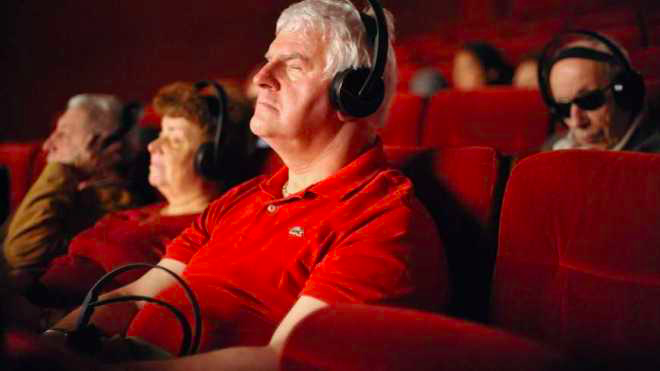In the media realm, audio description makes visual content accessible for individuals with blindness or low vision. Often, these descriptions are conveyed through narration and strategically placed during pauses in dialogue or sound effects.
In the past, some organizations have questioned the necessity of this type of accessibility feature. Still, today, more and more media and streaming platforms prioritize inclusivity by including audio descriptions in their content.
It Promotes Inclusivity and Diversity
When businesses implement audio description services, they demonstrate a commitment to inclusivity. Moreover, they showcase that their content is accessible to individuals with visual impairments, which helps build a sense of community among consumers.
Audio descriptions allow visually impaired individuals to engage with video content and other forms of media on a deeper level. This makes them an important tool for fostering inclusivity in society and building a more diverse culture.
As a result, businesses must make these services available to everyone. They should also ensure that audio describers are well-trained and able to describe visual elements without bias accurately. In addition, they should be able to provide context and explain the significance of visual aspects to enhance comprehension.
The inclusion of audio description in television programming and movies allows individuals to watch with friends and family members of all abilities, opening new horizons for them and contributing to a more inclusive world. Furthermore, many prefer watching movies and TV shows with the audio description turned on. It allows them to use their mobile devices, gives them flexibility when engaging in other activities, and points out key visual cues they might otherwise miss.
Just like ramps were initially designed to give access to people with physical disabilities, the audio description was once intended for blind and low-vision viewers. However, it has now evolved into a useful feature for many audiences.
It Enables Individuals with Visual Impairments to Engage
Currently, audio description is commonly available on broadcast TV, in cinemas during select movies, on some video streaming platforms, and online videos. It is also incorporated into many workplace training videos and educational materials.
Adding audio descriptions to media allows individuals with visual impairments to engage in the media fully. This is because they can follow the storyline, understand the action and visual cues, and build mental images. These descriptions are provided during the natural pauses in dialogue, and they can be used on various devices, including televisions, online video platforms, and mobile phones.
Aside from promoting inclusivity, audio description has numerous other benefits that can help individuals with visual impairments. For example, the descriptions can provide background information about the content, such as scene setting, characters, and location. In addition, the description can also be useful to assist with understanding complex visuals such as maps or artwork.
Some of the latest methods include crowd-sourced transcription and community involvement to ensure the audio description is accurate and up-to-date. These methods will improve accuracy and increase the availability of audio descriptions. They can also enable the blind and visually impaired community to be part of the production process, ensuring they get what they need from their media experience.
It Promotes Equal Access
Audio description helps to promote a more inclusive media landscape, ensuring that individuals with visual impairments have equal access to popular movies, TV shows, and online content. By incorporating this accessibility tool, businesses can create a more welcoming environment and foster a sense of belonging amongst their audiences.
In addition to promoting inclusivity, audio descriptions can also enhance the overall experience for viewers without visual impairments. This is because they will be able to gain more contextual and descriptive information about the visual elements of a video, such as characters’ facial expressions, actions, scenery, and so on. This additional information will give them a richer viewing experience, creating an immersive and engaging environment.
Furthermore, many people process visual information through their ears rather than their eyes. This is why 20-30% of students agree that they retain new information better upon hearing it. As a result, audio descriptions will help people with autism who struggle to read social and emotional cues demonstrated through on-screen actions and facial expressions.
Globally, there is an increasing emphasis on promoting accessibility in various aspects of life. In this regard, many countries are implementing laws and regulations that require companies to provide audio descriptions in their television and film productions. With the growing popularity of movie streaming services, they must prioritize the inclusion of audio descriptions to ensure that their platforms are fully accessible to everyone.
It Enhances the Overall Experience
Whether you advocate for accessibility, are a media creator, or are simply a consumer, embracing audio description is one way to create a more inclusive and accessible media landscape. Audio descriptions have the potential to be much more than a simple accommodation for blind and low vision viewers, but a vital tool that enhances everyone’s experience with visual content.
With advances in technology, customization options, multi-modal accessibility, community involvement, and global accessibility efforts, the future of audio description will likely be shaped by many factors. However, even in the era of AI, human skill and judgment will always be necessary to craft vivid, relevant, and accurate audio descriptions that meet the needs of individual viewers.
In addition to being an essential accommodation for blind and low-vision audiences, audio description is also increasingly gaining popularity among people without visual impairments. Many find that they enjoy the supplemental narration to their video content, particularly those who are on the autism spectrum and have difficulty deciphering facial expressions or social cues. Others enjoy the ability to watch their videos with the description turned on, allowing them to engage in immersive media while performing other tasks such as cooking or driving. This new mode of access provides more flexibility and choice to consumers than ever before. For these reasons and many more, incorporating audio descriptions into your videos is the right thing to do and the smart thing.



